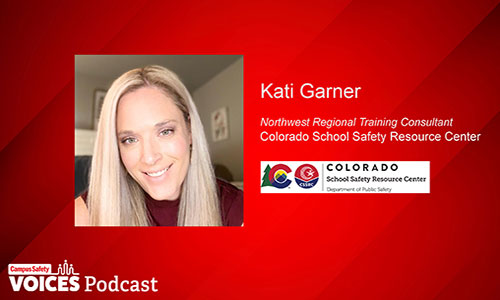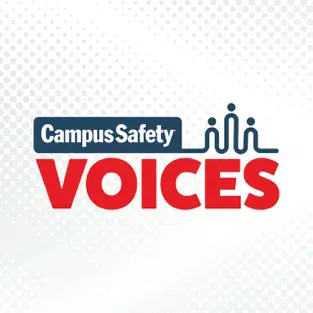It’s categorically undeniable that the pandemic has added stress to the lives of countless people and families across the globe. For many, the last two years have been devastating, whether financially, mentally, emotionally — or all of the above. But how can you tell if the way you are feeling is “normal” for someone dealing with unprecedented struggles, or if it is something more?
When many think of mental health, they think of someone in crisis. However, we can struggle with our mental health without it being a crisis. Although there is an unnerving amount of mental health concerns reported among all ages, it’s particularly concerning for young students who may not have strong coping mechanisms that many young adults or adults have developed over time. This is where educators and campus safety professionals can help.
As an educator or campus safety professional, do you know the difference between “typical” expected stress that comes with unexpected change, and actual traumatic, debilitating stress? Would you be able to identify someone having a mental health crisis? If so, would you know what to do to help?
To learn about the differences and how educators can help both students and themselves, Campus Safety spoke with Kati Garner, who is the Northwest Regional Training Consultant for the Colorado School Safety Resource Center (CSSRC). CCSR helps K-12 schools with psychological safety needs as well as physical safety needs, including behavioral threat assessment and suicide risk assessment.
Since the pandemic, schools have been faced with an increase in suicide risk assessments. One of Garner’s main goals in the work she does is to normalize conversations regarding mental health in the hopes that it will encourage people to get support for their mental health struggles before they reach a crisis level.
“We want mental health to be a common conversation. If you cut your hand and you’re bleeding, you go to the doctor. Just because we can’t see what’s going on with someone and how they’re thinking and feeling, doesn’t mean that it’s not there and prevalent,” she said. “We need to give them the help and assistance that they need. There’s no shame or blame or anything negative around that.”
[promo_content slug=”csc22-promo-kati-garner”]
Encouragingly, Garner said younger children are becoming more open to talking about mental health since more conversations are being had.
“We’re starting to see that shift in some of our middle school and high school students that have had these conversations since they were little,” she added.
Garner also spoke about how mental health challenges, such as depression, manifest differently for everyone. The key is recognizing a change from their typical behavior.
“We have this textbook kind of image of depression. When I’m sad, I stay in bed all day. Maybe I overeat or I don’t eat at all. I drop out of activities. I want to be alone. But the reality is for some students, that could be their baseline behavior. So a shift in their baseline may be they’re angry. We’re seeing increased anger in students, so something that may not have pushed them to anger before is now making them extremely angry,” she said. “I always tell staff and students and teachers to pay attention to those. If your gut says that there is a change in that baseline, then that is an opening for a conversation. It doesn’t necessarily mean that something’s wrong, but what a great opportunity to have a conversation and say, ‘I’ve noticed that you’ve been sleeping a lot more lately, or I’ve noticed that you’ve been really quick to anger lately. Talk to me about what’s going on.'”
To compound the rising levels of mental health concerns, there is a staggering shortage of mental health professionals and teachers — something that existed well before the pandemic (11:32).
“There are set ratios that the American School Counseling Association recommends counselor to student ratios, and those are way overcapacity. We have ratios in terms of school psychologists to student ratios, and those are over capacity,” Garner said. “And then we have some schools that don’t have any of those things. A lot of our rural districts don’t even have a school counselor on hand. It’s not in the budget or it’s not even possible. And so the capacity to handle the increased mental health concerns that we’re seeing is just not there right now.”
While there is undoubtedly cause for concern regarding student mental health and available resources, Garner said she is extremely concerned about teachers (23:29).
“Teachers are struggling at an all-time high right now. I am extremely concerned about teachers’ well-being and mental health. We already have a really hard time finding teachers to come in to the career because it is a very underappreciated and underpaid job. We are now seeing with the amount of tasks they are being given and asks they are being given, along with the pandemic and also the pressure from parents and school boards, staff are at an all-time high-stress level,” she said. “I am definitely concerned. I am hearing from districts that I work with, as well as districts throughout Colorado, that their biggest concern right now is not only their students’ mental health but their staff’s mental health. They are hanging on.”
Garner also spoke to:
- Strategies for de-escalating a student mental health crisis (19:36)
- Free resources/programs for addressing student suicide (22:45)
- How staff can differentiate between typical stress/burnout and actual traumatic stress (26:05)
- Ways to combat increased stress and prioritizing your own mental health (28:26)
- Available federal and state grants and tips for applying (33:22)
- Roadblocks schools are facing while trying to improve mental health supports, including the stigma around mental health (37:06)
If you or a loved one are struggling with suicidal thoughts, you can text TALK to 741741 or initiate an online chat at suicidepreventionlifeline.org/chat/. Additional resources can also be found at SpeakingOfSuicide.com/resources.









